Hey there, spice lovers! Are you ready to take your taste buds on a flavour adventure? Get ready to recreate the magic of Wagamama’s gochujang tofu rice bowl right in your own kitchen. This 20-minute vegan recipe is bursting with vibrant colours, textures, and tastes – the crispy gochujang tofu, cool pickled veggies, and fluffy rice will transport you straight to foodie heaven. Trust me, this isn’t your average weeknight dinner; it’s a culinary experience you won’t want to miss!
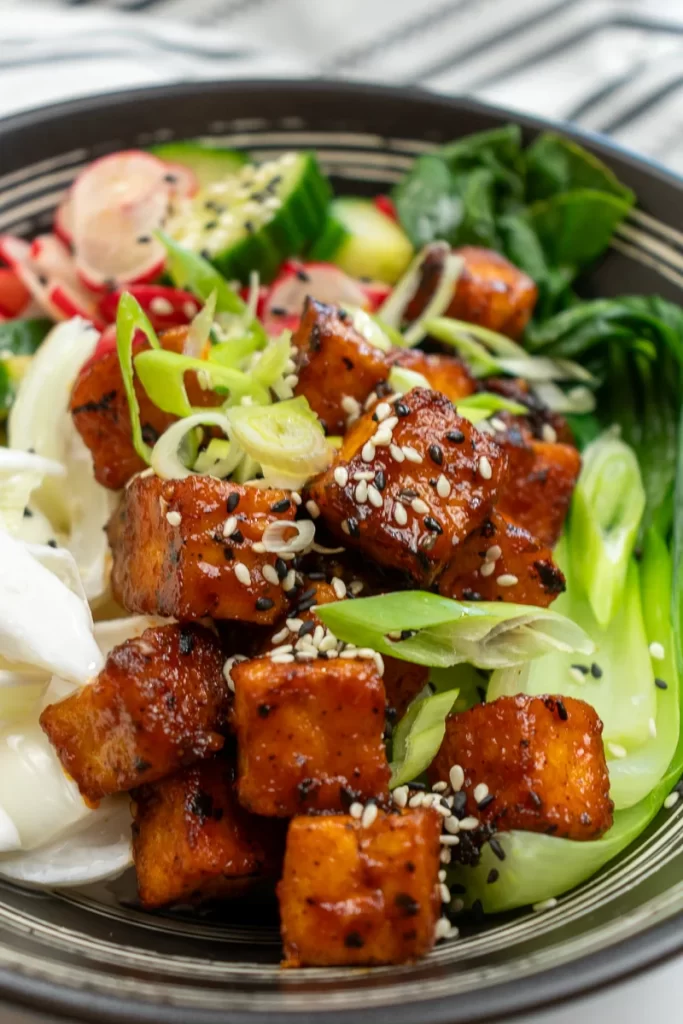
😋 Why I love this recipe!
If you’ve ever had the Gochujang tofu rice bowl at Wagamama’s, you know the vibrant flavours I’m talking about. This rice Bowl is my take on that deliciousness – it’s the perfect way to bring a taste of summer home in just 20 minutes! With crisp veggies, a fiery gochujang kick, and a cool, refreshing cucumber and radish pickle, it’s everything you crave in a weeknight meal.
📝 Ingredient notes
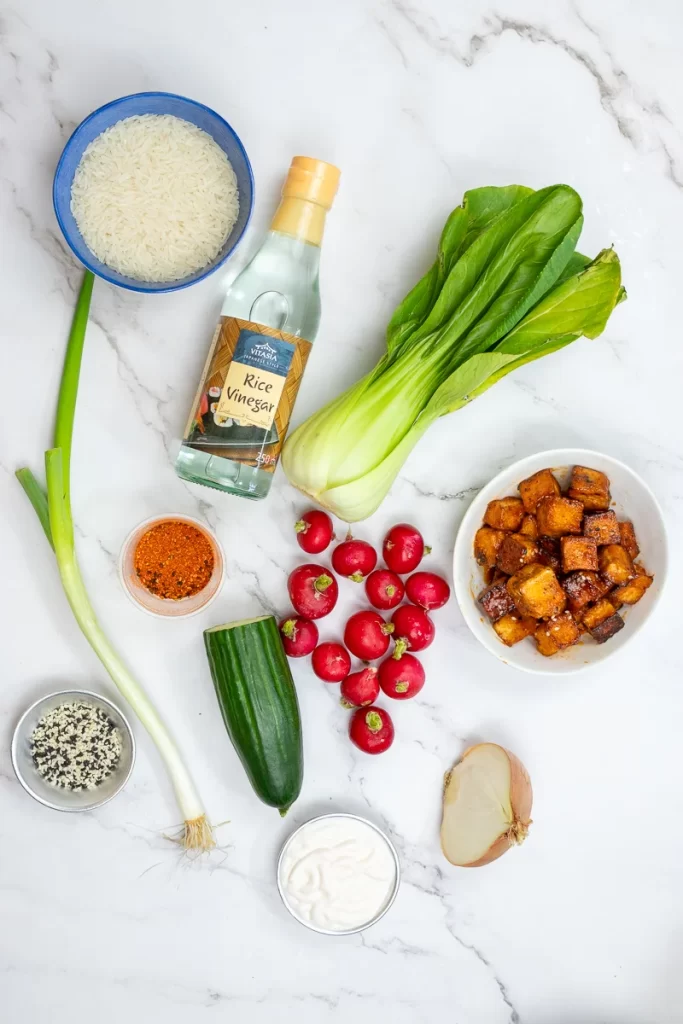
Gochujang Tofu: Get the recipe for my super crispy, flavor-packed gochujang tofu here. It’s a delicious source of plant-based protein that soaks up all the bold, savory flavors of the gochujang sauce.
Jasmine Rice: Its fluffy texture and slightly sweet aroma pair perfectly with the bold flavours in this bowl. I think Wagamamas use sushi rice in theirs, feel free to use whatever you fancy.
Cucumber & Radishes: Add a cool, refreshing crunch to balance the richness of the tofu and the spiciness of the gochujang.
Shichimi Togarashi: Japanese seven-spice blend adds a complex layer of warmth and spice. It’s readily available in most supermarkets, but if you’re a fan of Wagamama’s, grab a few extra packets on your next order. They’re free and a great way to keep your spice rack stocked!
White Onion: A classic addition to slaws and pickles. It brings a sharp, pungent flavour that mellows when pickled.
Spring Onion & Sesame Seeds: These garnishes add a fresh, herbaceous flavour and visual appeal.
Vegan Mayo: Creamy and rich, it balances the spiciness of the gochujang and adds body to the dish.
🥣 How to make a Gochujang tofu rice bowl
- Measure Rice: Measure out 75g of rice per person (150g, or 1 cup total for two servings). Add double the amount of water (300g, or 2 cups), a pinch of salt, cover, and bring to a boil on your smallest burner.
- Cook Rice: Once boiling, reduce heat to the lowest setting and let simmer for 10 minutes without lifting the lid. After 10 minutes, turn off the heat and leave undisturbed for another 10 minutes.
- Prepare for Steaming: While the rice cooks, fill a pot with water and place your steaming basket on top. Bring the water to a boil. If you don’t have a steamer, simply boil the pak choi later.
- Make Gochujang Tofu: Prepare a batch of gochujang tofu according to the recipe here. (Remember to return to these instructions while the tofu cooks.)
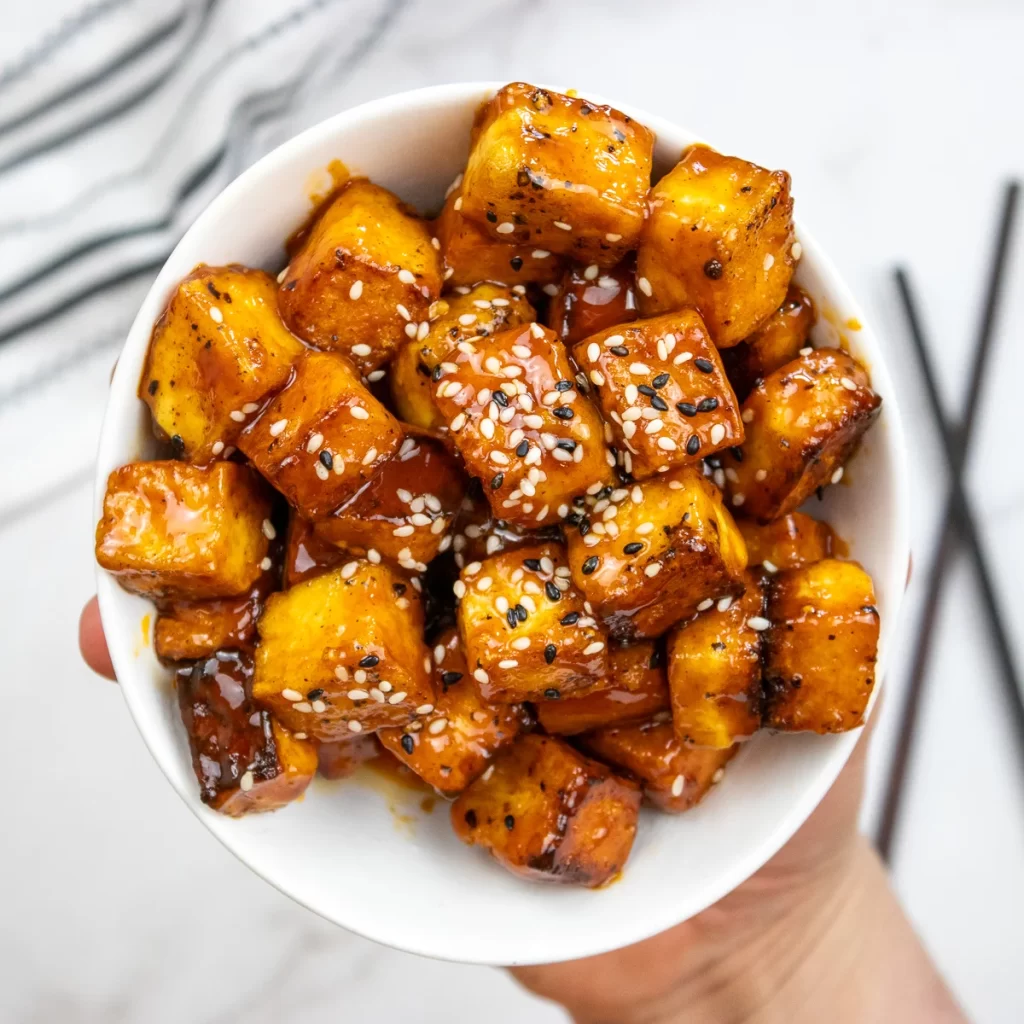
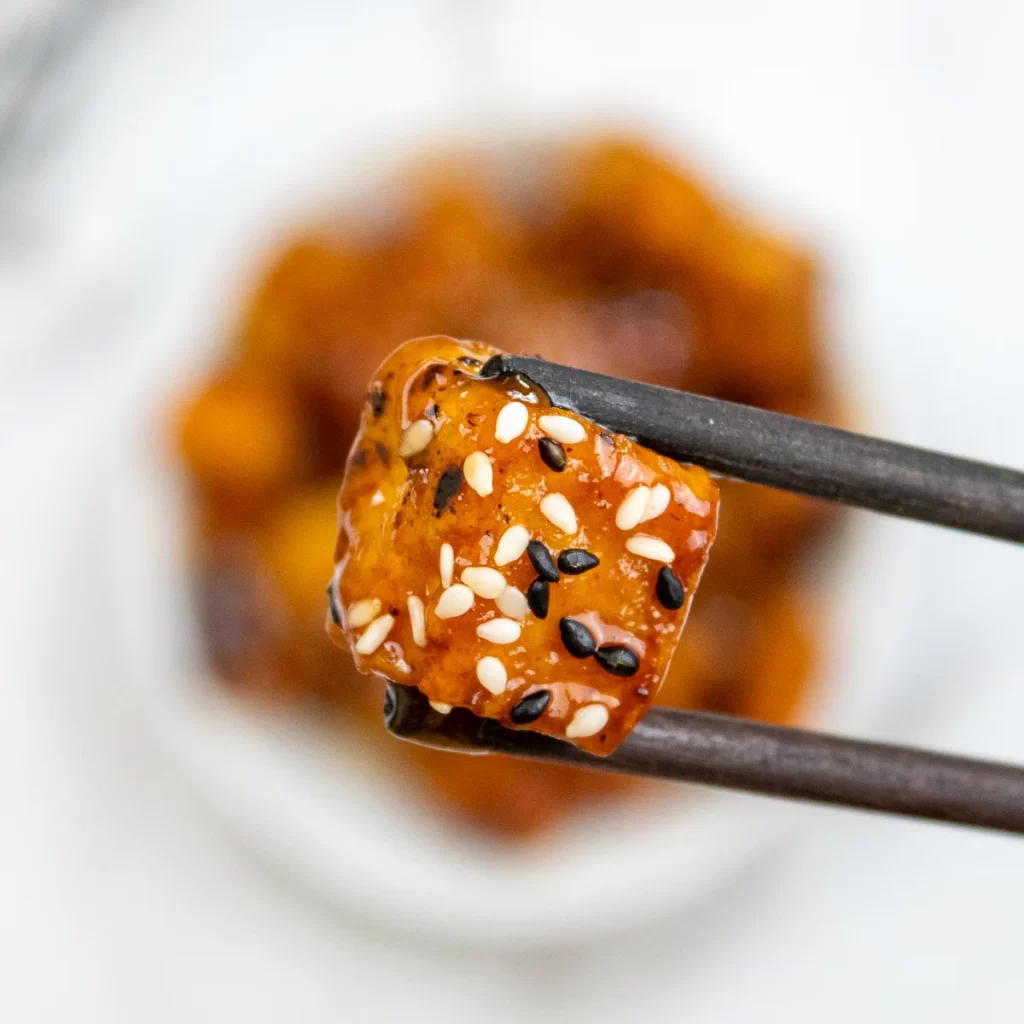
- Start Slaw and Pickle: Thinly slice the onion and combine it with half the rice vinegar and half the salt in a container. Massage the onions to soften them slightly and set aside to pickle.
- Slice the radish and cucumber into 0.5 cm thick pieces.
- In a separate container, combine the sliced radish and cucumber with the remaining rice vinegar, salt, and most of the shichimi togarashi, reserving a pinch for garnish.
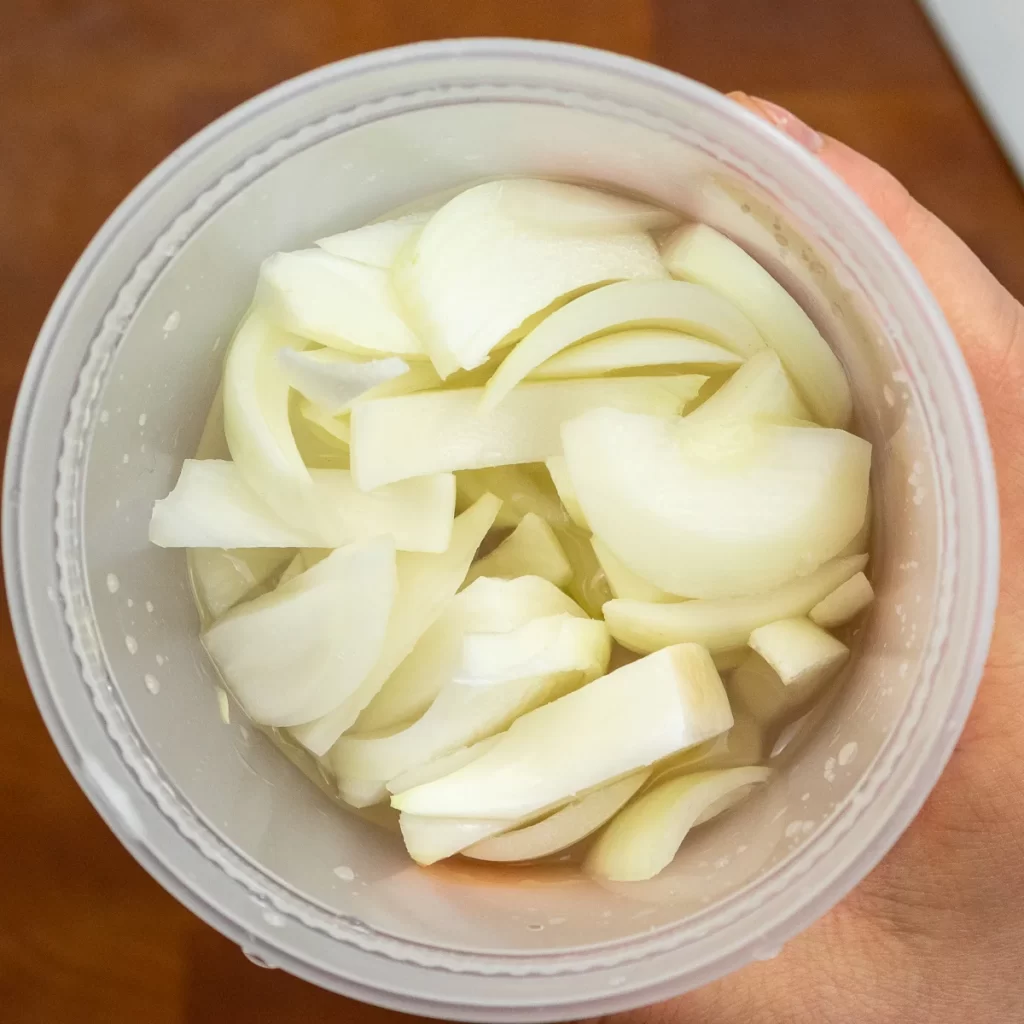
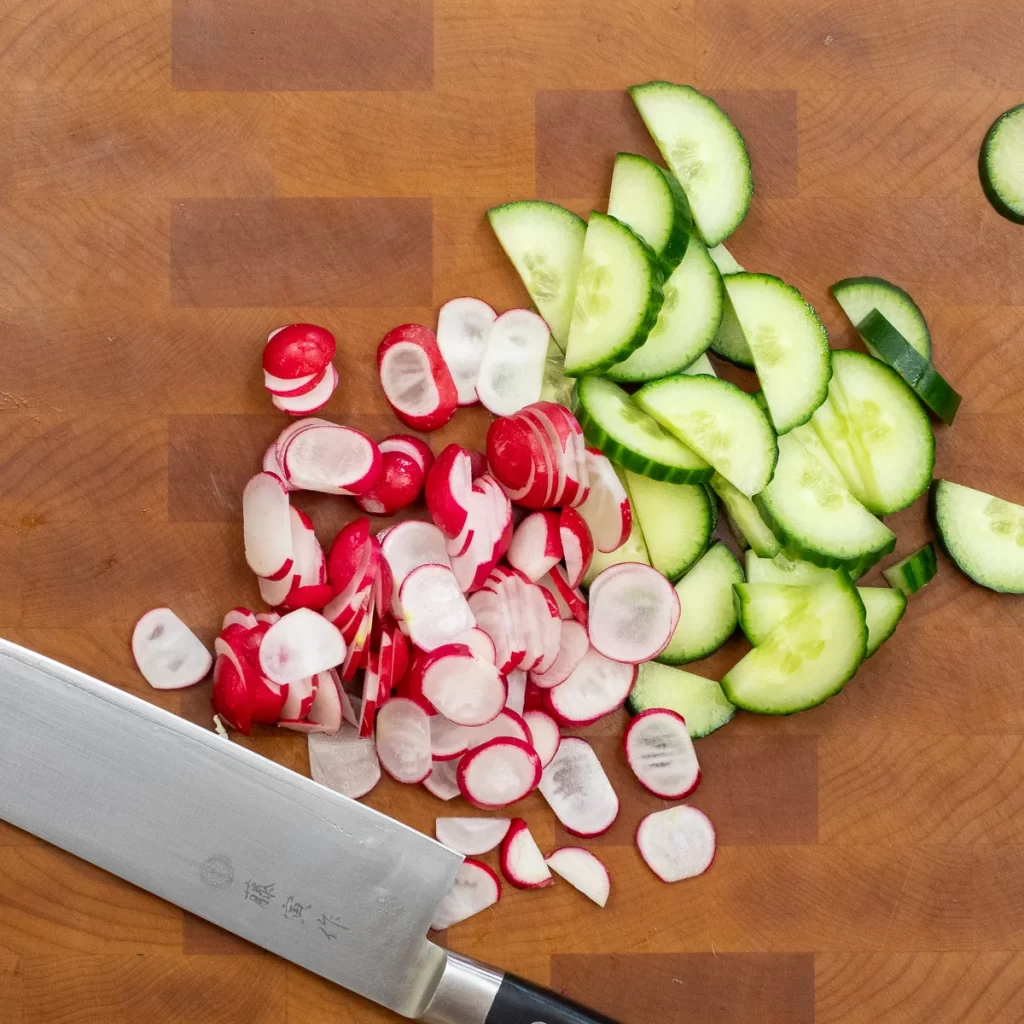
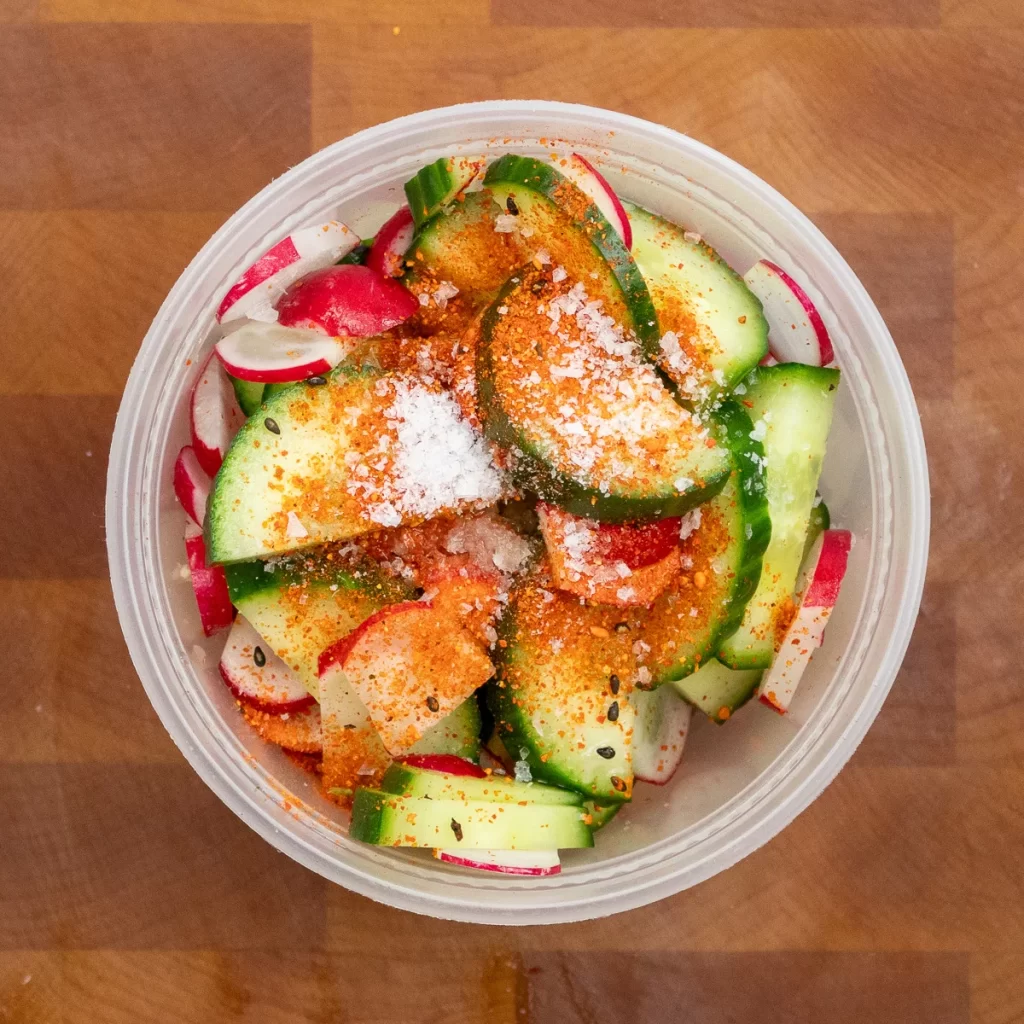
- Cook Pak Choi: When the rice and tofu have about 5 minutes remaining, cook the pak choi by either steaming it for 3-4 minutes or boiling it briefly until slightly softened.
- Slice Spring Onion: Finely slice the spring onion on an angle for garnish.
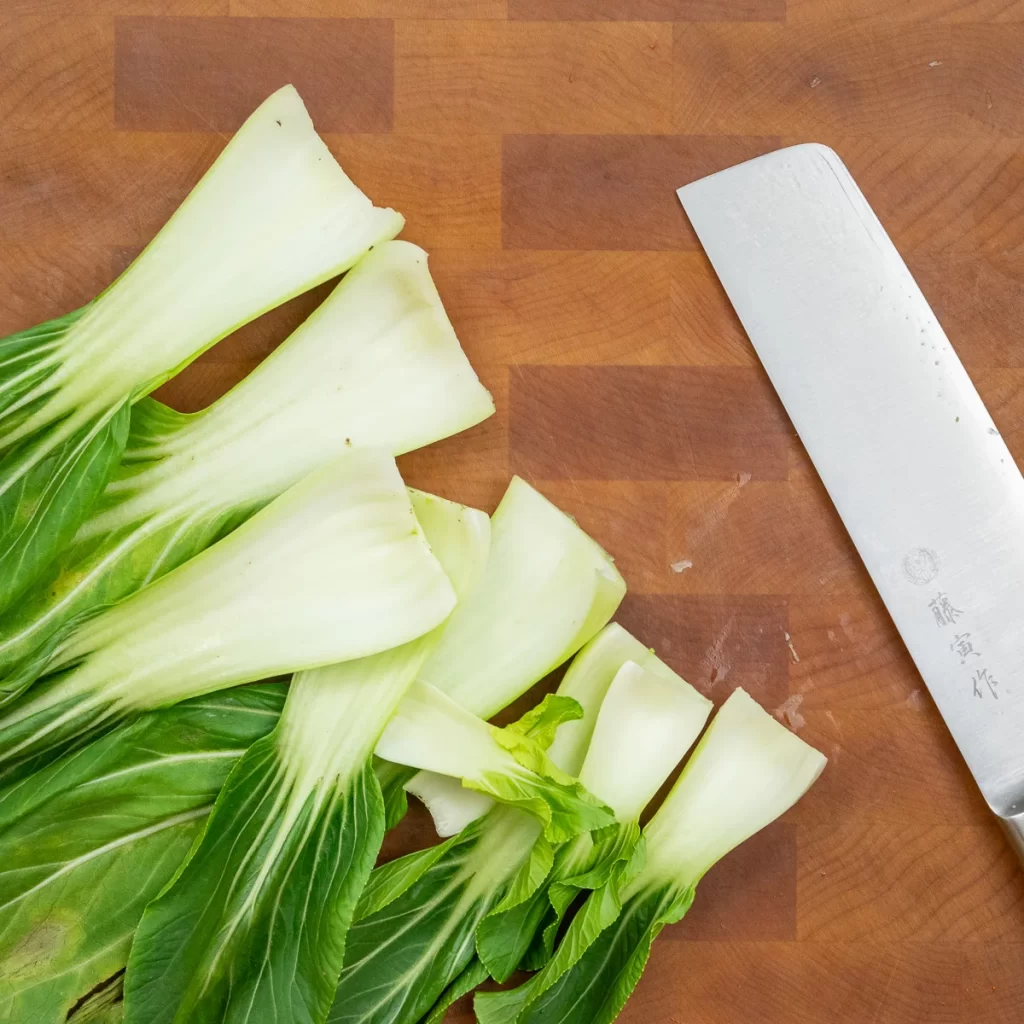
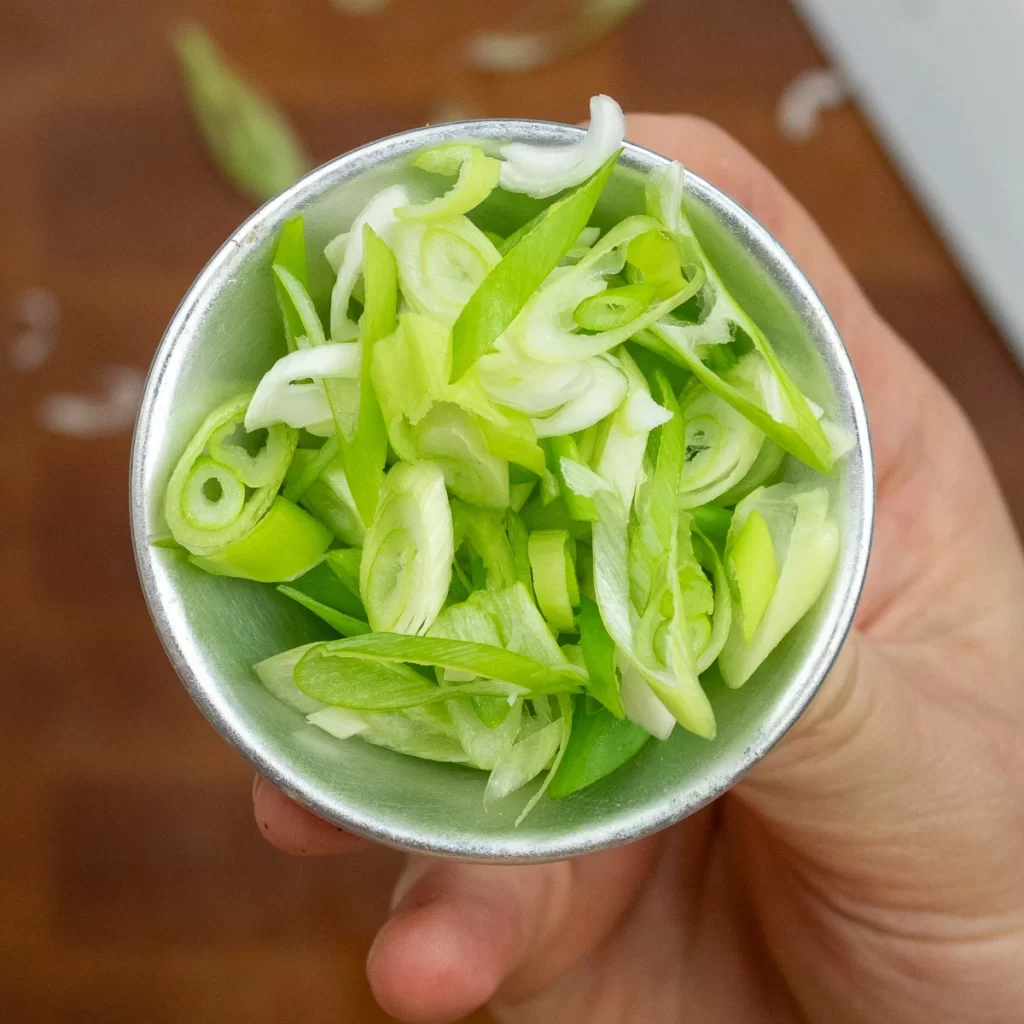
- Assemble Bowls: Begin assembling the bowls by adding the cooked rice as the base. Arrange the pak choi around the edges, then add the pickled radish and cucumber mixture. Drain the vinegar from the onions, mix them with mayonnaise to prevent the sauce from becoming too thin, and add them to the bowls.
- Garnish and Serve: Garnish the bowls with the sliced spring onion, sesame seeds, and the remaining shichimi togarashi. Serve immediately.
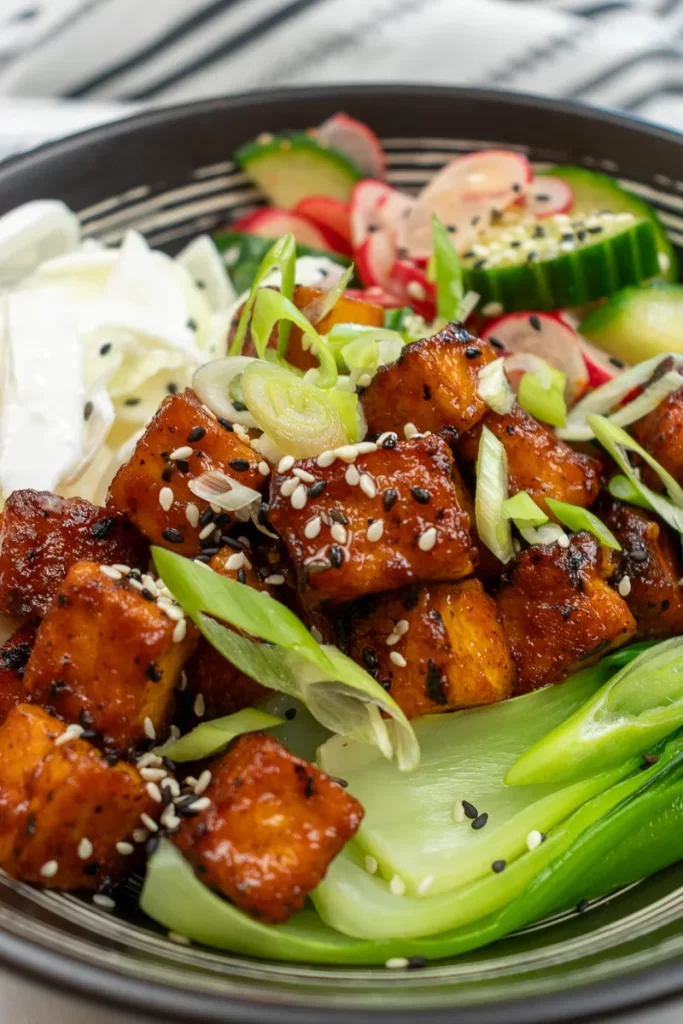
💡 Tips for getting it right!
- Perfect Rice Every Time: Resist the urge to lift the lid while the rice cooks or rests. This ensures fluffy, perfectly cooked rice.
- Don’t skip the pickle: The quick cucumber and radish pickle adds a crucial refreshing element that cuts through the richness of the dish.
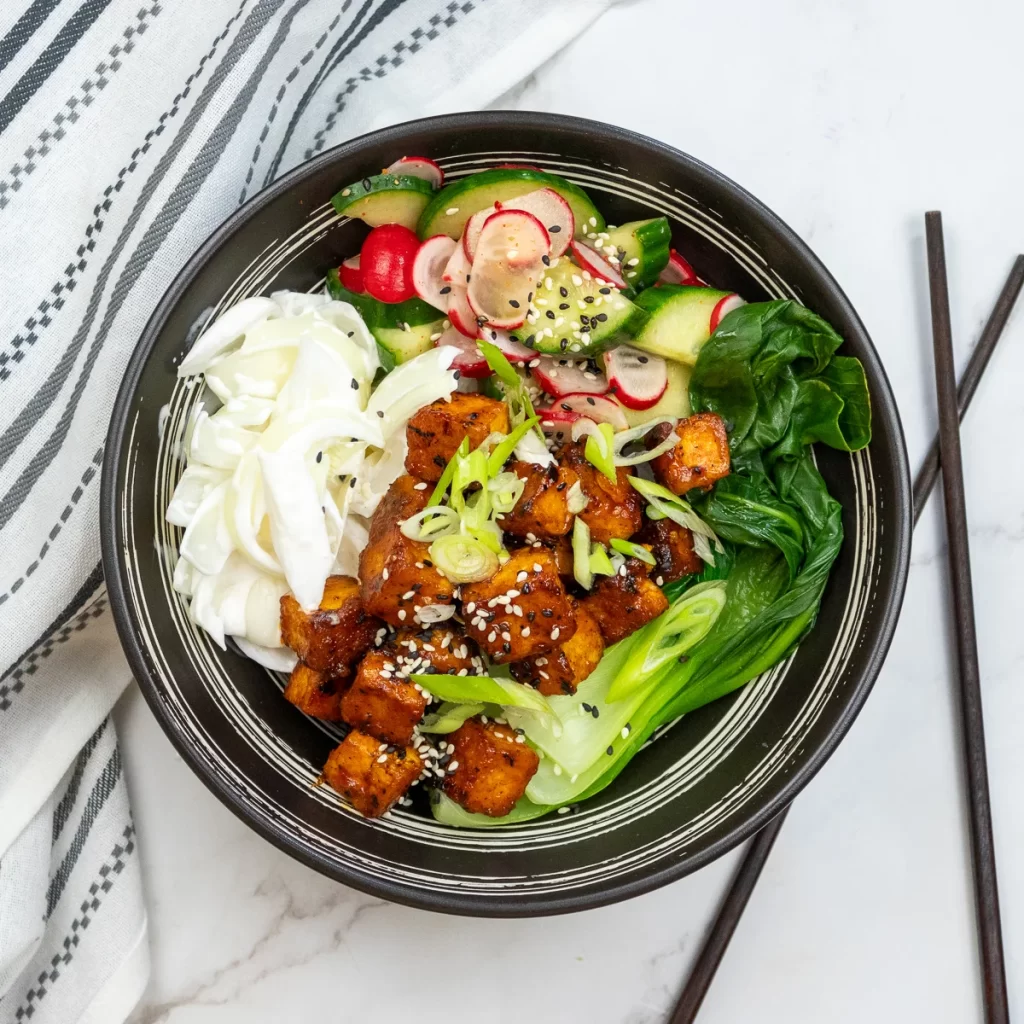
🎨 Potential variations
- Kimchi Kick: Swap out the radish and cucumber pickle for a tangy kimchi topping.
- Sesame Ginger Twist: Drizzle your bowls with a sesame-ginger dressing for an extra layer of umami goodness (Recipe coming soon!).
🤔 Frequently asked questions
Is gochujang vegan?
Most gochujang pastes are naturally vegan, but it’s always a good idea to double-check the ingredient list to be sure.
Can I make this gochujang tofu rice bowl ahead of time?
While best enjoyed fresh, you can cook the rice and tofu, prep the veggies, and make the sauce ahead of time. Store them separately and assemble the bowls just before serving.
What can I use instead of pak choi?
If you can’t find pak choi, try other leafy greens like spinach, kale, or even romaine lettuce.
Can I use a different type of rice?
Absolutely! This recipe is adaptable to any type of rice you prefer, whether it’s sushi rice like Wagamama’s, brown rice, or even quinoa.
I don’t have shichimi togarashi, what can I substitute?
If you’re missing this spice blend, try a pinch of red pepper flakes or cayenne pepper for a similar kick of heat.
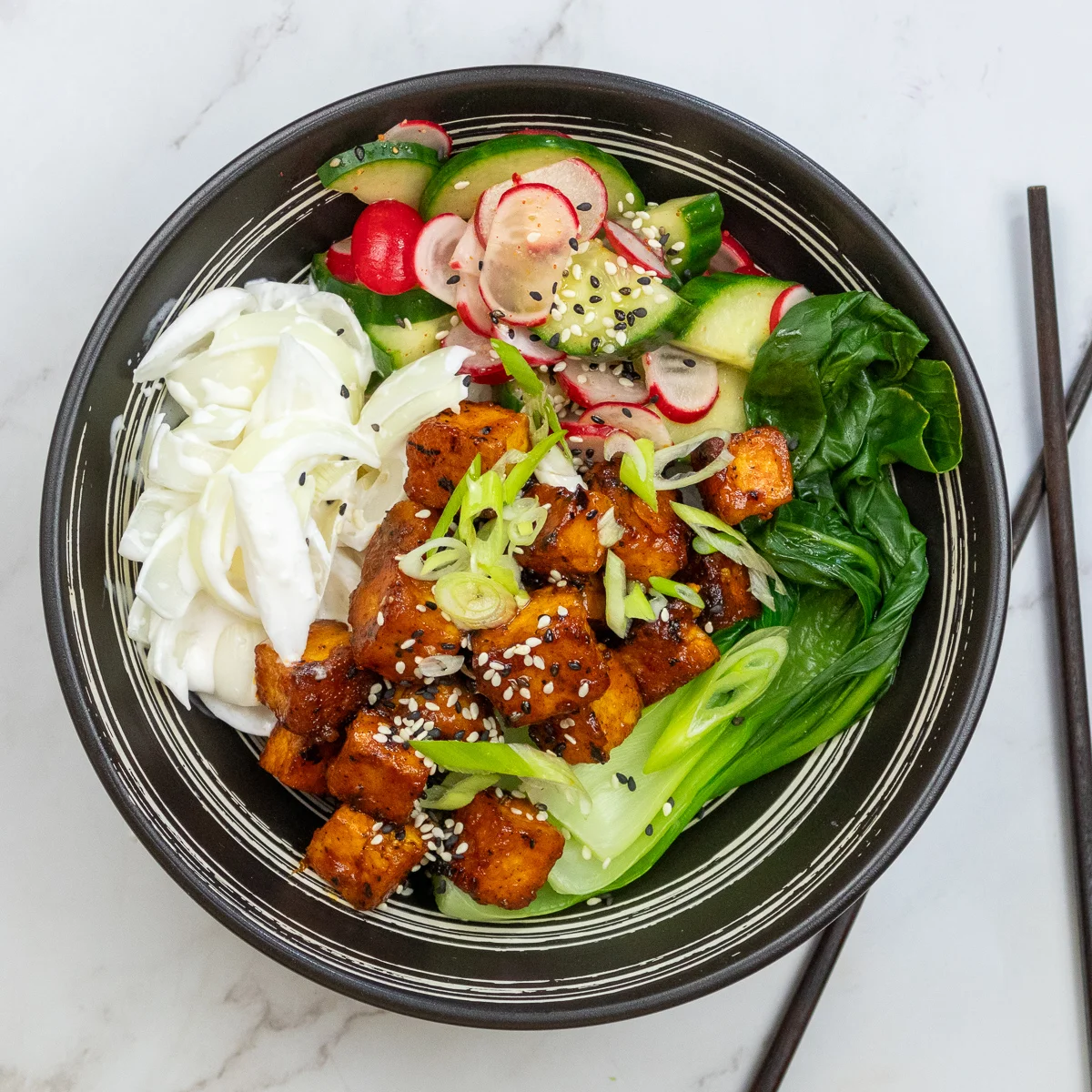
Gochujang tofu rice bowl
Equipment
- 1 Steamer
Ingredients
For the gochujang tofu
For the bowl
- 150 g Jasmine rice
- 1/4 Piece Cucumber
- 100 g Radishes
- 2 tbsp Rice vinegar
- 1 tsp Salt
- 1 tsp Shichimi togarashi
- 1/2 Piece White onion
- 5 ybsp Vegan mayo
- 1 Piece Spring onion
- 1 tsp Sesame seeds.
Instructions
- Cook Rice: Combine 150g rice, 300g water, and a pinch of salt in a pot. Bring to a boil, reduce heat to low, and simmer covered for 10 minutes. Turn off heat and let rest for 10 minutes.
- Make Tofu: Prepare gochujang tofu according to the recipe linked in the main post.
- Prep Vegetables: While tofu and rice cooks, thinly slice onion and massage with half the rice vinegar and salt. Slice radish and cucumber, then combine with remaining vinegar, salt, and most of the shichimi togarashi.
- Cook Pak Choi: Steam or boil pak choi for 3-4 minutes until slightly softened. Thinly slice spring onion.
- Assemble Bowls: Layer rice, pak choi, pickled radish/cucumber, and onion (drained and mixed with mayonnaise) in bowls.
- Garnish and Serve: Top with spring onion, sesame seeds, and remaining shichimi togarashi.
Notes
- For perfect rice, don’t lift the lid during cooking or resting.
- Adjust shichimi togarashi to your spice preference.
- Leftover pickled vegetables can be stored in the fridge.
